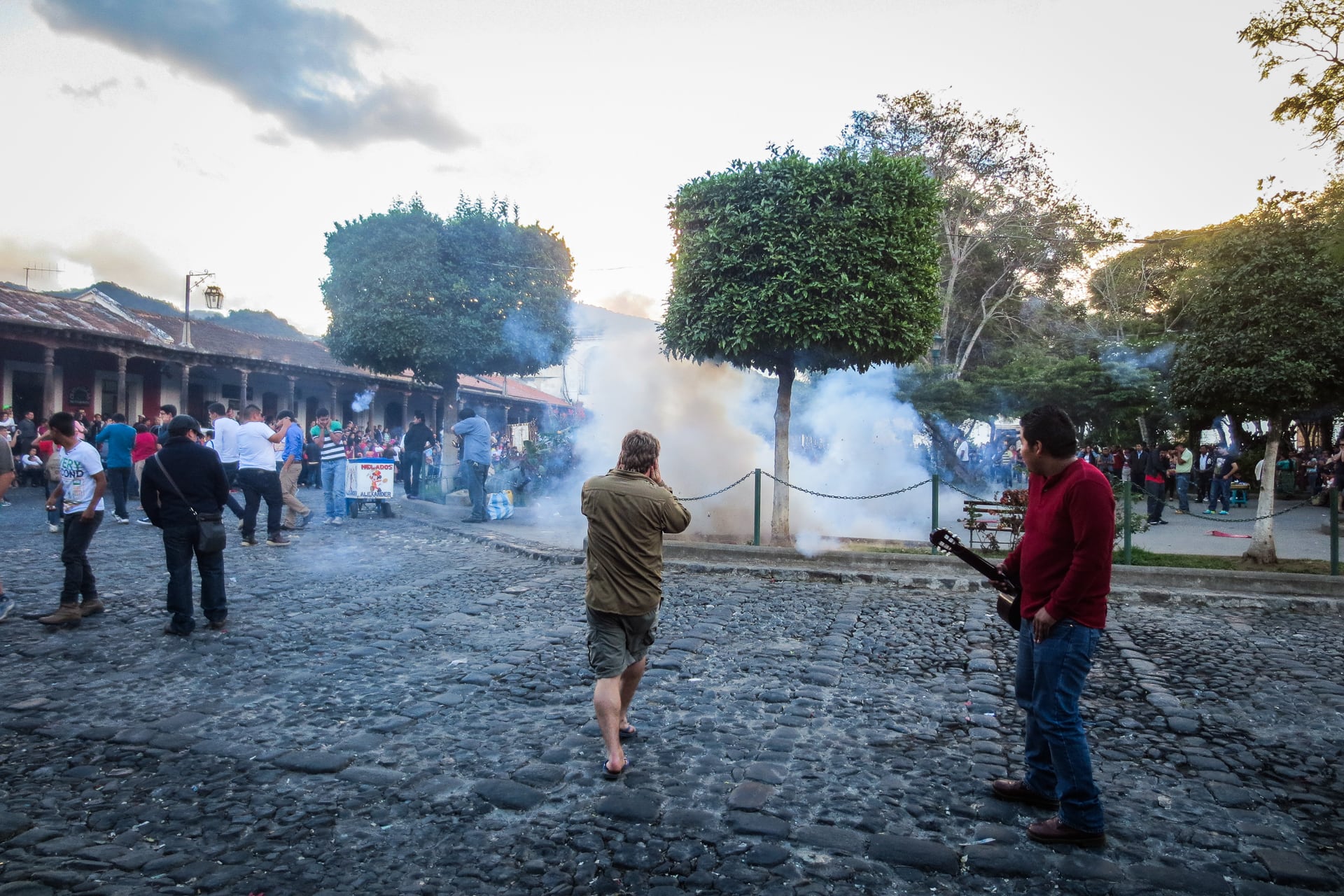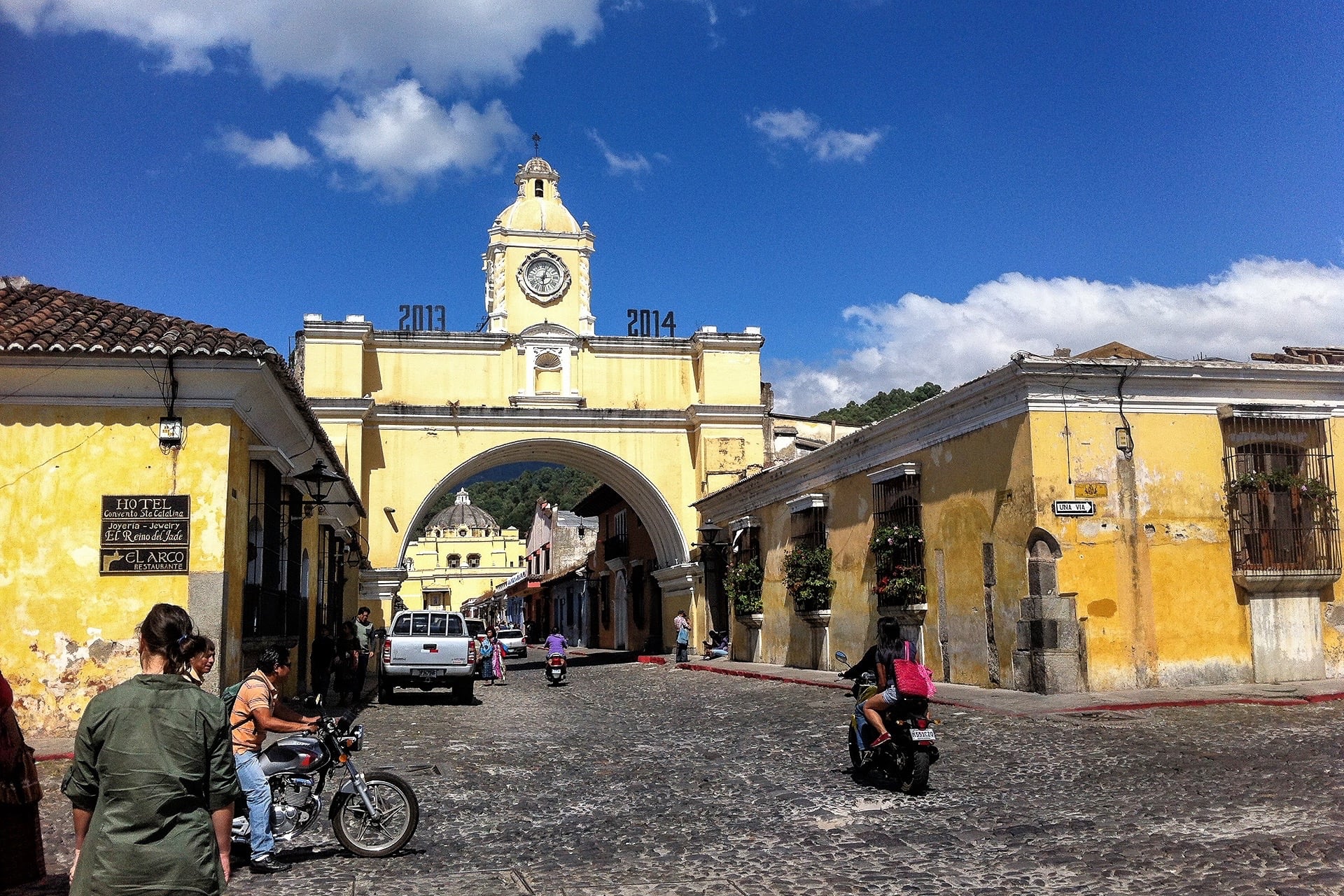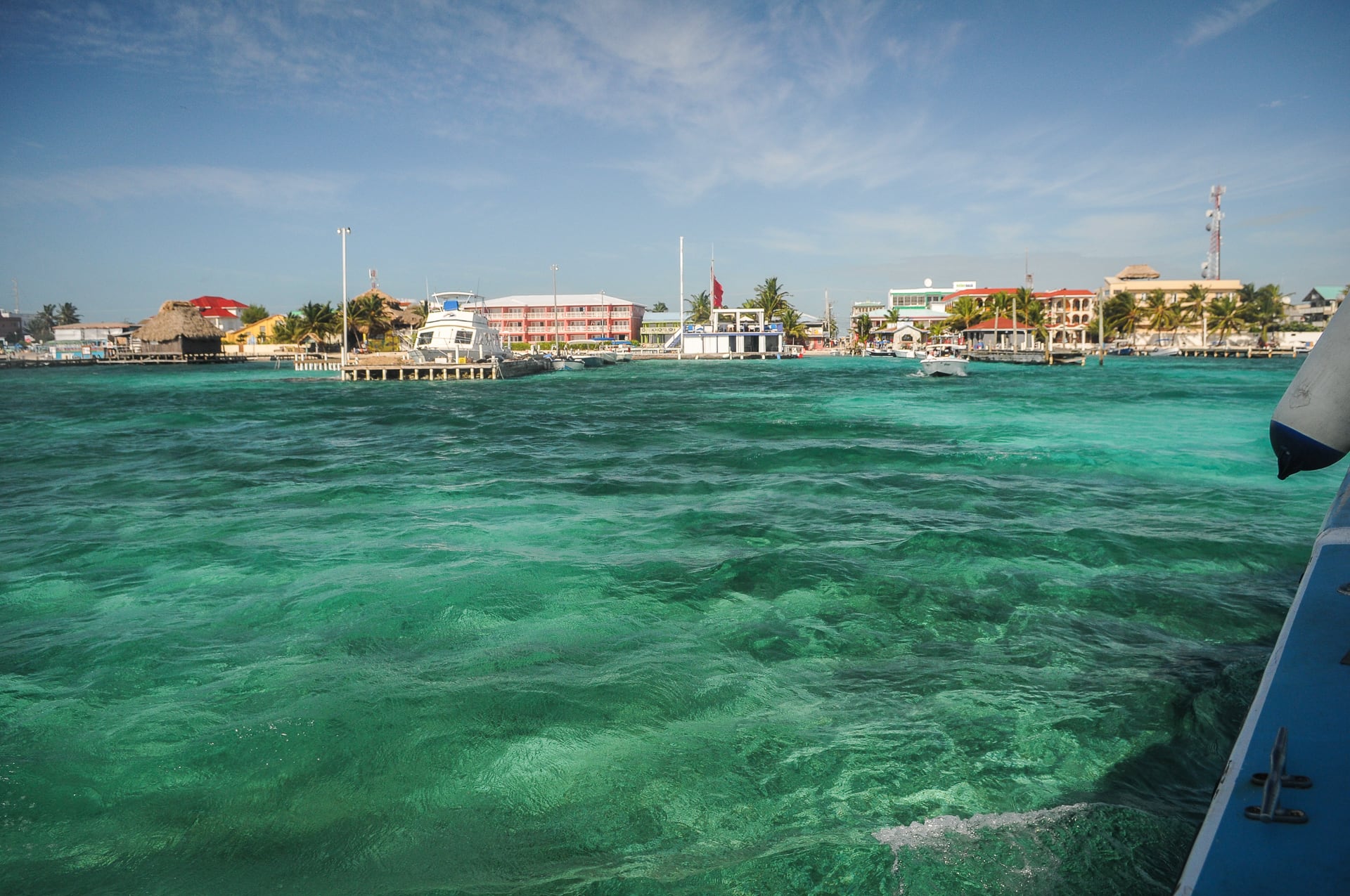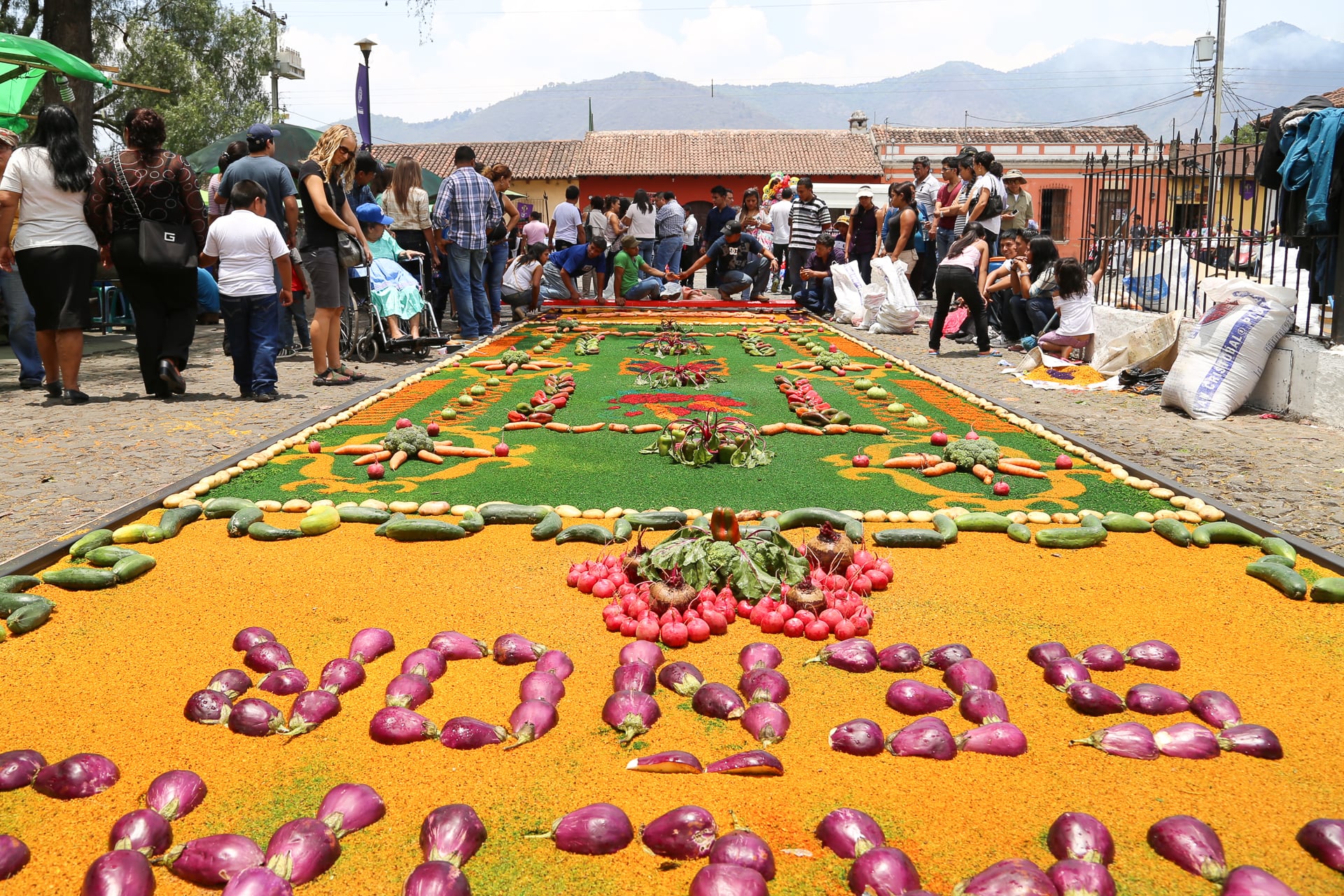New Years Day :: Celebrating Antigueno Style
We found ourselves in La Antigua Guatemala, Guatemala (aka Antigua) with Lori’s brother on New Year’s day. We arrived just in time to catch some of the celebrations still going on in the city center.
At first glance, it may appear that the fair city of Antigua is under attack, but what in fact is going on is New Years Day celebrations in the central park (Parque Central). Antiguenos celebratory accoutrement of choice, you ask? Cuetes (firecrackers) by the boatload. Leading up to the Christmas holiday, the crack and boom of firecrackers is a constant, particularly in the evenings and on weekends in Guatemala (and Belize, for that matter). We were under the impression that the snap, crackle and pop led up to Christmas day and dramatically tapered off shortly thereafter, but New Years Day completely obliterated that theory, so to speak.
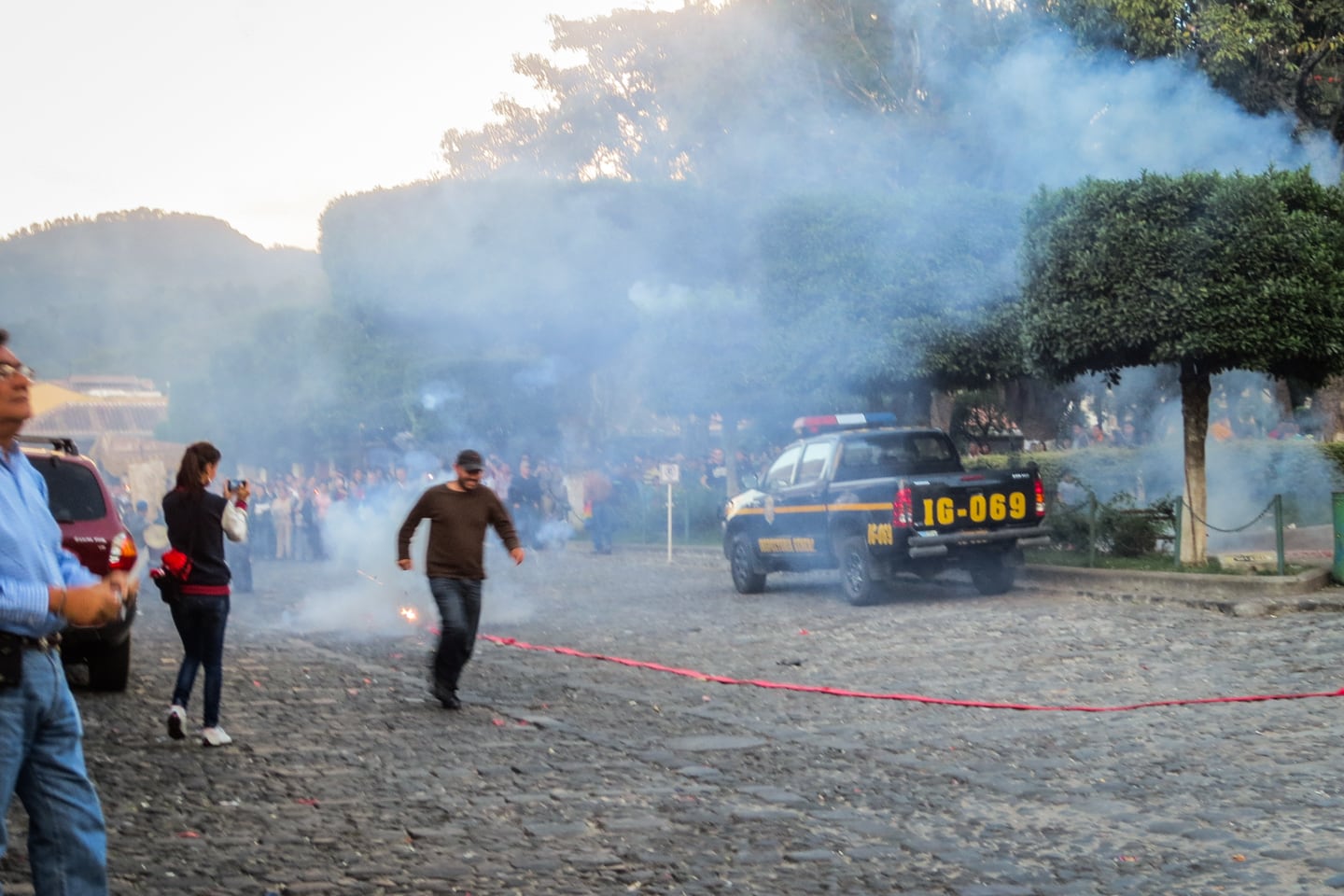
On this particular day, however, the lighting of cuetes appeared to be much more methodical and ceremonial than the typical sight and sound of children lighting off a strip here and there. In the Parque Central in Antigua, police barricaded main thoroughfares (but didn’t seem to otherwise regulate or intervene), men unrolled long strips of firecrackers, lighting and then running away, while a stoic procession of Catholic parishioners led by a small brass ensemble marched behind the smoke and fire.
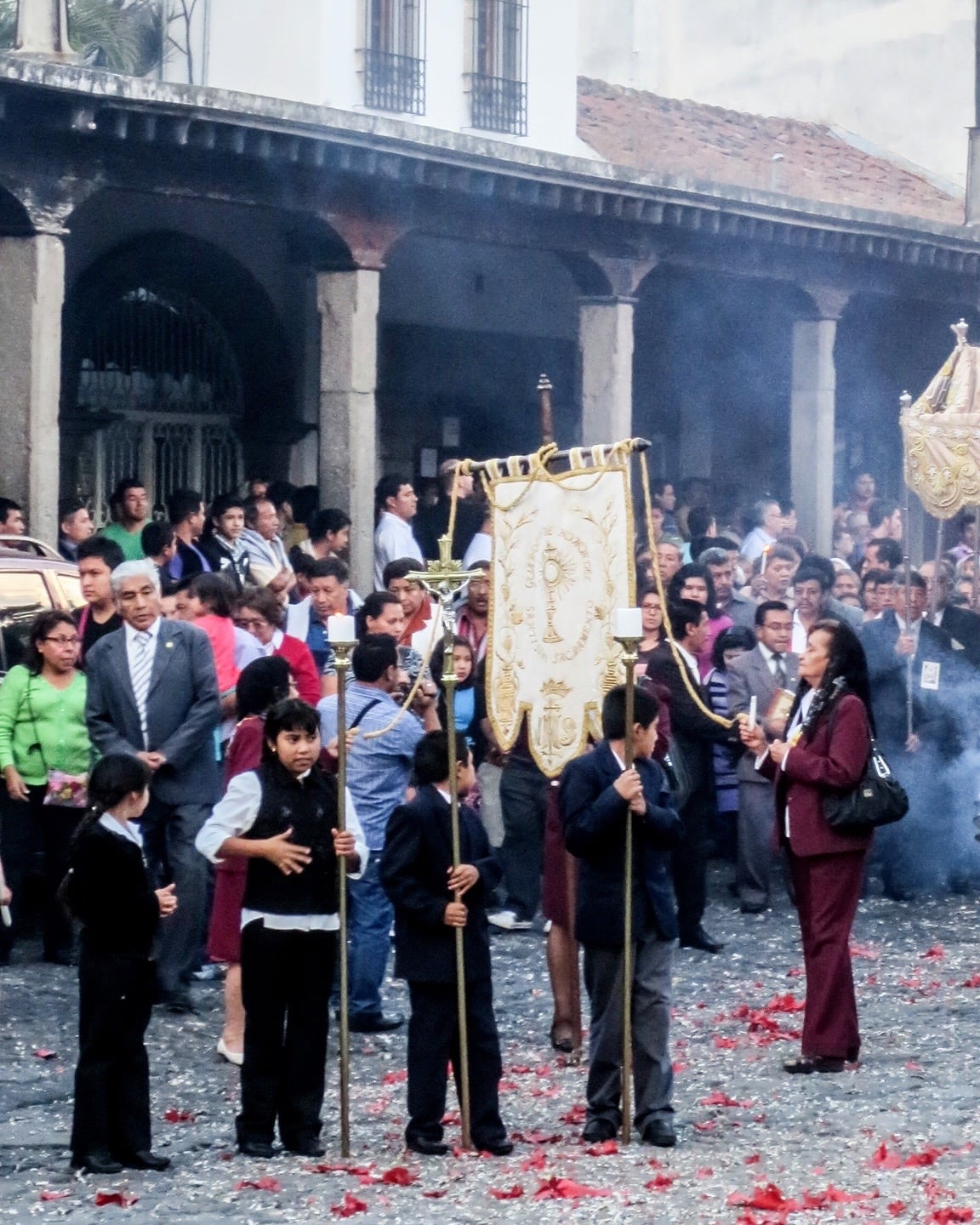
Amidst the commotion, Antiguenos not participating seemed to go about their regular afternoon activities, every now and then shielding their eyes from flying shrapnel or plugging their ears in response to the piercing noise, occasionally hurrying their pace while passing particularly loud and violent detonations.
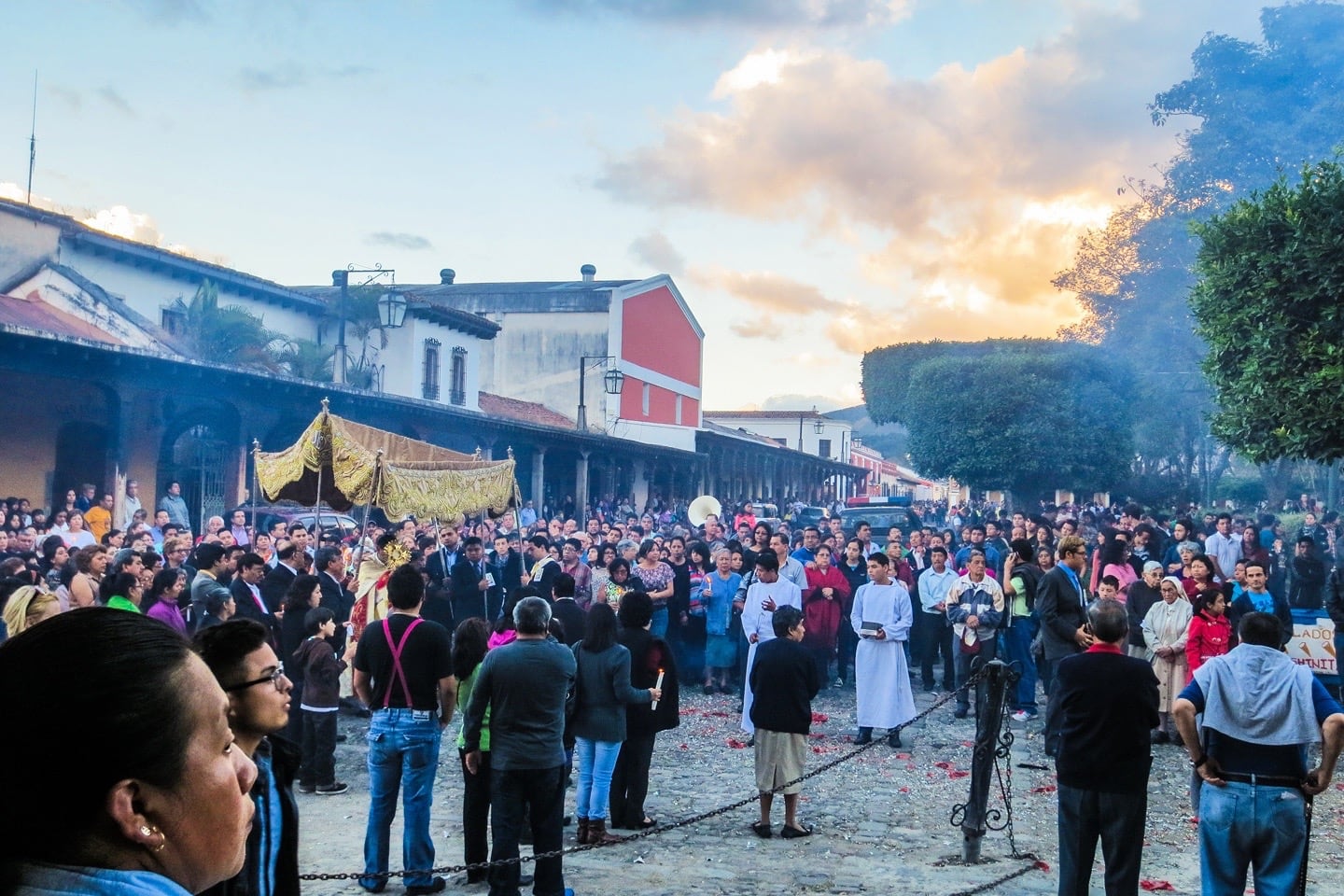
The afternoon’s activities caught us off guard, as we stumbled upon the procession on our way to find a recommended happy hour spot. Much later, we roamed the streets of Antigua, a UNESCO town, marveling at the amount of detritus left from the celebration — red firecracker wrappers and newspaper — the telltale signs of locally-made fireworks — littering every inch of the city center. I would come to discover that young children were tasked with producing much of the pyrotechnics around the holidays.
According to press reports via the U.S. embassy in Guatemala City, local production of pyrotechnics is a very profitable, but dangerous industry in Guatemala. In the town of San Juan Sacatepequez (about 30 miles from Guatemala City), an estimated 3,500 (largely indigenous) households serve as workshops where around 10,000 workers (half of which are children) manufacture fireworks. Due to tougher government regulation in the past ten years, such operations generally work underground. About 30 children each year die in incidents related to fireworks manufacturing.
I don’t offer this information to be a killjoy or pass judgment on a cultural practice deeply engrained in a country which is not my own. I think, however, that as an observer, it is worth knowing the facts, especially in cases where I am witnessing something I do not fully understand. As with the slaughtering of certain majestic creatures or the mutilation of one’s own body for spiritual and religious purposes, I find that knowledge leads to understanding — which is important for an outsider. Knowledge and understanding by no means necessitates approval or acceptance, but is a fundamental part of being a responsible traveler.
